Nikola Tesla - a short story about one of the most fascinating minds in the history of the world
The other day I was reminded of the movie Prestige. Do you remember this great film by Christopher Nolan (based on the book of the same name by Christopher Priest) about two illusionists? The plot of this exciting, mysterious thriller is set in London at the beginning of the last century? Colleagues and former friends (played by Christian Bale and Hugh Jackman) become "mortal" enemies after a sudden tragedy. Rivalry becomes their fuel and performing the perfect magic trick has become an obsession and the goal. In this relentless fight, the goal justifies the means, and our heroes do not give up on anything, devising various tricks and sabotages for their rival, but showing a willingness to risk their lives for the sake of the ultimate goal. It is the desire for perfection that brings them to the scientist and genius whose inventions were seen as true magic! Yes! Nikola Tesla (interpreted by David Bowie) is a genius scientist, you guessed it! His ingenious invention - the teleportation machine - was supposed to help Robert Anger (Hugh Jackman) once again surpass himself and push the boundaries of reality with a new trick.
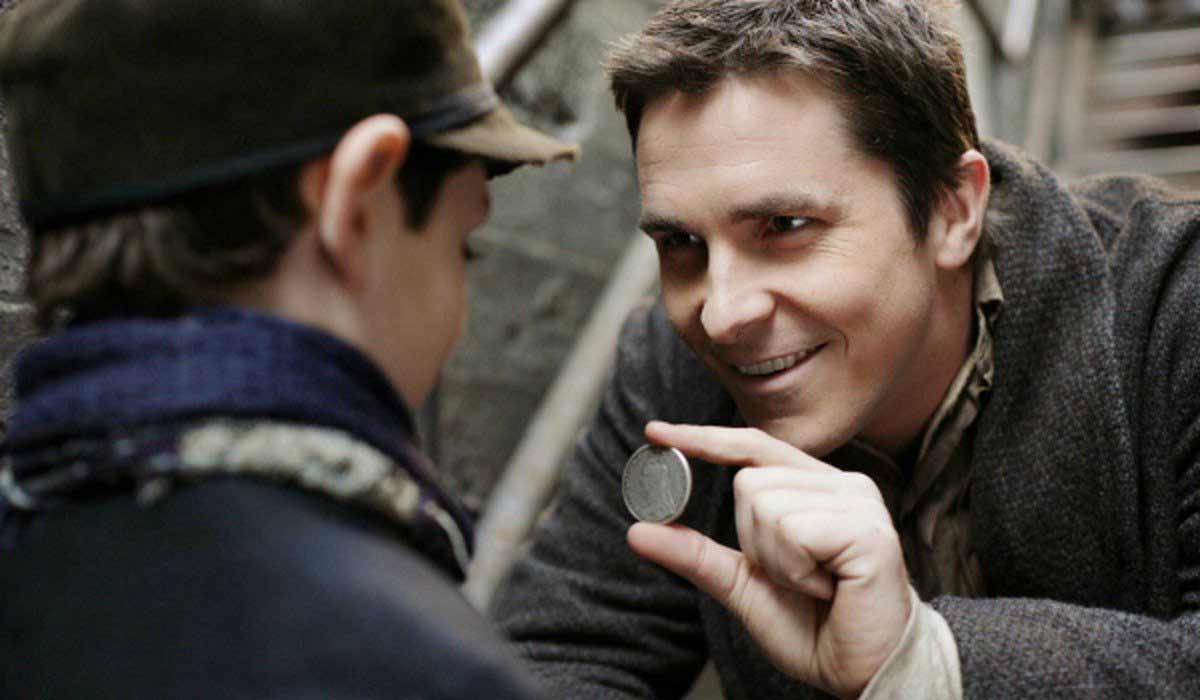
source: cinemabland.com
Although everything is possible in the film, the fact is that Nikola Tesla was a timeless man, and his discoveries at that time were beyond the reach of knowledge and equal to magic. I chose this film as a parallel with the life and work of Nikola Tesla because the uncompromising dedication, sacrifice, and innovation of the trait that adorns the heroes of the said film, adorns the great, probably the greatest innovator in the history of mankind Nikola Tesla.
Nikola Tesla - childhood and early beginnings
Nikola Tesla was the fourth child, born on the 10th of July 1856, in the small Serbian village Smiljan in the "Military Border" (provincial and the border area with the Hapsburg Monarchy / Austria). His father, Milutin, was an Orthodox priest of the Sremski Karlovac Metropolitanate and an excellent, widely known orator. Interesting stories are linked with Tesla's mother Georgina (Georgina - Đuka Tesla). Born as the eldest sister of eight children, she had the misfortune to lose her mother early on and take on all the household chores and care of her brothers and sisters. That prevented her from finishing school and developing her undeniable talent even more. Namely, Georgina Tesla was extremely dexterous with her fingers and often used her innovations as a tool/device for the household. Nikola Tesla himself always spoke about her with a lot of respect and admiration, emphasizing that he inherited his inventive talent from her.
Nikola had an older brother Dane two older sisters Milka and Angelina, and one younger sister Marica. When he was only 5 years old, Tesla witnessed the death of his brother Dane, who died when he fell from his horse. It is believed that this tragedy was the reason why Nikola's father, Milutin, was against Tesla enrolling in a technical school that was far from their family home.
He finished the first grade of primary school in his hometown of Smiljan. After the whole family moved to Gospić due to his father's service in 1862, Nikola Tesla finished the remaining three grades of elementary school there and after that three years of high school. Even then, he drew attention to himself, when as an eight-year-old he solved the problem of a fire pump. In 1870, at the end of the third reason, Nikola Tesla became seriously ill. He graduated on July 24, 1873, in a group of only 7 students, when he was 17 years old. Upon his return to Gospić, Nikola Tesla fell ill again, this time with cholera from which he had been suffering for 9 months. Despite everything, he managed to convince his father to enroll in electrical engineering studies instead of the seminary.

Nikola Tesla on studies
Nikola Tesla's father sent him to his uncle Prote Mandić, to gather strength for the upcoming efforts by staying in the fresh mountain air. Tesla started studying electrical engineering in 1875, which was two years after graduation. At the age of 19, he enrolled in the Polytechnic School in Graz. The professors were extremely worried about Tesla's health. Namely, Nikola Tesla slept very little, and he wrote about himself that he read many books and that from the age of 24 he knew a lot by heart, especially Goethe's Faust. He did not receive a scholarship from the Imperial-Royal General Command after completing his first year. He also applied to Matica Srpska for a scholarship in Novi Sad twice and was rejected both times.
In 1878, he severed all ties with family and friends who thought he had drowned in the Mura. Nikola Tesla moved to Marburg (today's Maribor) where he found a job with a local engineer. That period of Nikola Tesla's life was followed by numerous controversies, so it was said that Tesla gave in to gambling. After several months of searching, his father found him in 1879 and returned Nikola home. A father as a clergyman and an exemplary man could not find a justification for such behavior of his son. Unfortunately, Tesla's father died the same year.
Nikola Tesla moved to Prague in 1880 to finally finish his studies at the request of his father. As he did not study Greek, he was prevented from enrolling at Charles University. He spent his time in Prague mostly in libraries. There is a memorial plaque in Ve Smečkah Street, where he lived, today. Nikola was aware of the sacrifice made by his family for him to be educated in Prague, so he left his studies and returned home after only a year.
In his autobiography, he states that even then, he could have imagined each of his inventions completely before constructing it. This phenomenon in psychology is professionally called "visual thinking".
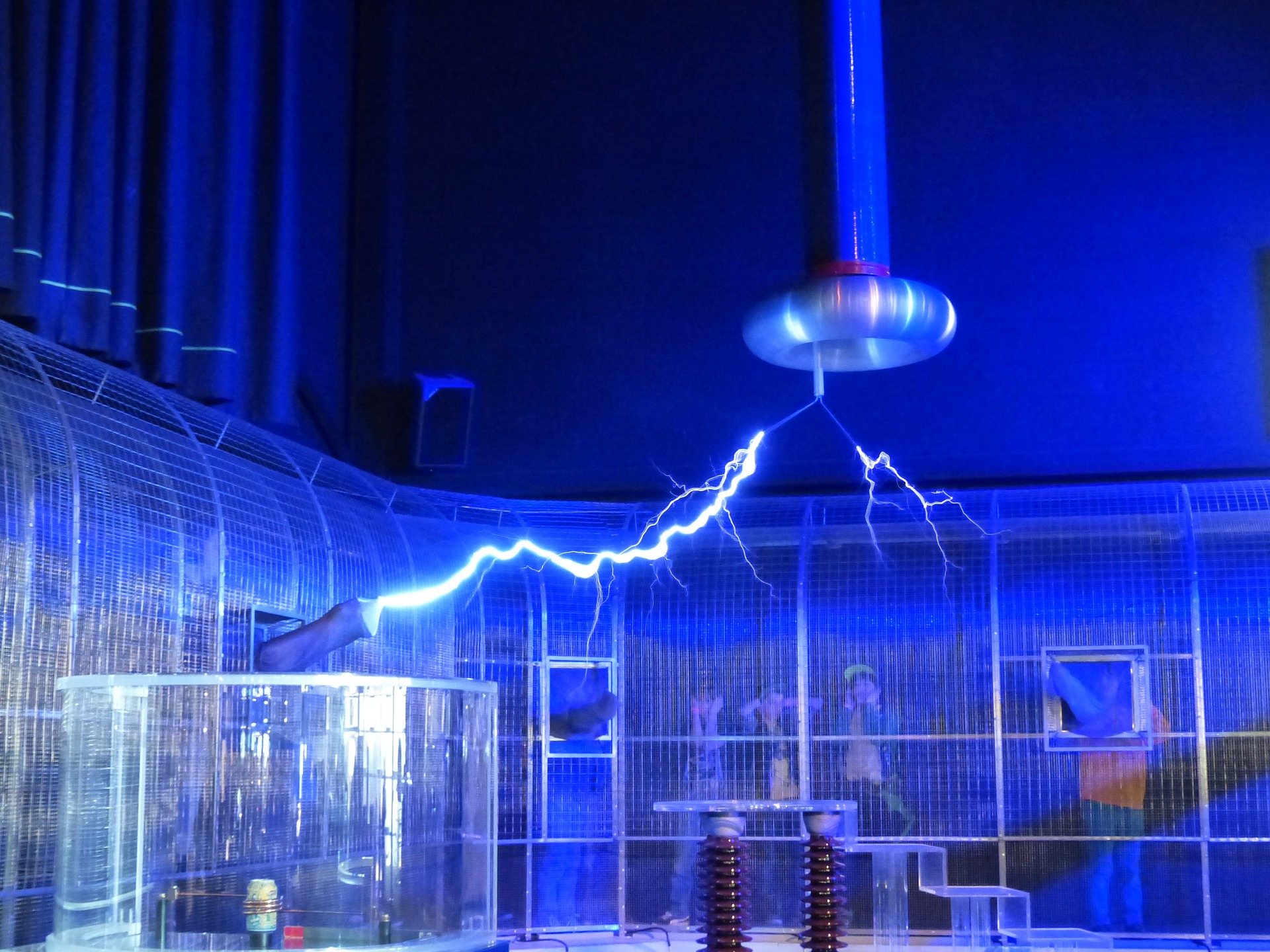
First patent and first job
In 1881, in Budapest, Nikola Tesla found his first invention working in the telegraph company "American Telephone Company". It was a "telephone amplifier" or the device known now as a telephone speaker. It is interesting how Tesla came up with the idea for this invention. It was the idea of using a commutator-free AC motor. While walking with a friend, he recited Faust, when the idea came to him. He immediately sketched the future amplifier on the sand with his stick.
Working in Paris and Strasbourg
In 1882, Nikola Tesla was employed as an engineer in Edison's company in Paris. He worked on the improvement of electrical equipment. The following year, he was given the task of enabling a one-way headquarters in Strasbourg (today's Strasbourg), which the German tsar was supposed to personally open.
As early as the end of 1883, he signed a contract for the development of the first induction motor that used the principle of alternating current magnetic fields. He worked on the development of numerous devices, including a device with a rotating magnetic field, for which he received a patent in 1888.
Nikola Tesla in the USA
After a written recommendation from Tesla's former boss Charles Bachelor, on June 6, 1884, Nikola went to America in New York. Edison hired Tesla in the company of Edison's machine. Nikola Tesla made rapid progress, solving the most complicated problems when he was offered to reconstruct a direct current generator.
After Tesla described the nature of the solution and offered a solution, Edison promised Tesla $ 50,000 to complete the project. Nikola Tesla worked for almost a year on the implementation of a solution that will bring an incredible profit for Edison's company and several patents more. When Tesla asked for the promised money, Edison broke his promise by answering that "Nikola Tesla does not understand the American sense of humor."
Although Edison offered Tesla an increase in his weekly salary by $ 10, that did not prevent the separation of Tesla and Edison. Edison, otherwise, a good businessman, saw the danger of Tesla's invention of direct current. Namely, Tesla's alternating current generator was far more efficient than Edison's DC generators, so only one generator was enough to cover the entire city, while Edison's generator was enough to cover only one city district. Therefore, he led a campaign against two-way electricity, talking about the dangers of electricity.
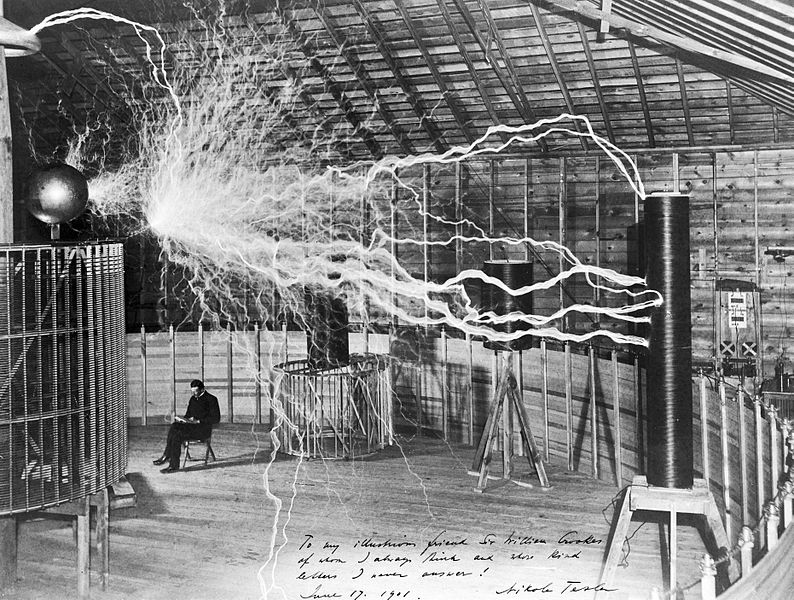
source: wikipedia
Tesla's early discoveries
In 1886, Tesla founded his company "Tesla Lighting and Production". In the beginning, he encountered resistance from the founders, because they did not agree with Tesla's plan to introduce AC motors. He lost investors and the company itself soon, so he had to turn to work as an ordinary worker in New York. He worked for a year from 1886 to 1887 to feed himself and raise money for the next project.
In 1887, Tesla managed to develop the first brushless AC motor. The following year, he introduced it to the American Society of Engineers and began working with George Westinghouse in his laboratories. In the same year, he developed the "Principles of Tesla's Coil".
In 1887, Tesla began researching what was later called "X-rays." A vacuum tube with one elbow (similar to Tesla's patent 514170) was used in the experiment. The device differed from the others because it did not have a "broom electrode".
Experiments with x-rays are associated with certain controversies related to their harmful effect on the skin. Tesla did not agree with that and attributed the damage to the skin to the influence of ozone or nitric acid to a lesser extent. Nikola Tesla performed experiments wanting to further prove his thesis, but the results of that research were burned in a fire in the laboratory in 1895.
Obtaining American citizenship and new inventions
At the age of 31, on July 30, 1891, Nikola Tesla received American citizenship. In the same year, he started working in his laboratory in New York. In his laboratory, he introduces the world to his fluorescent light bulb for the first time. That is when the idea of wireless energy transfer appeared.
When he was 36, Nikola Tesla published his first patent for alternating currents. Subsequent experiments were related to the principles of rotating magnetic fields. Inspired work and ingenious patents brought Tesla to the helm of the American Institute of Electrical Engineers, where he spent the period between 1892 and 1894 as vice president.
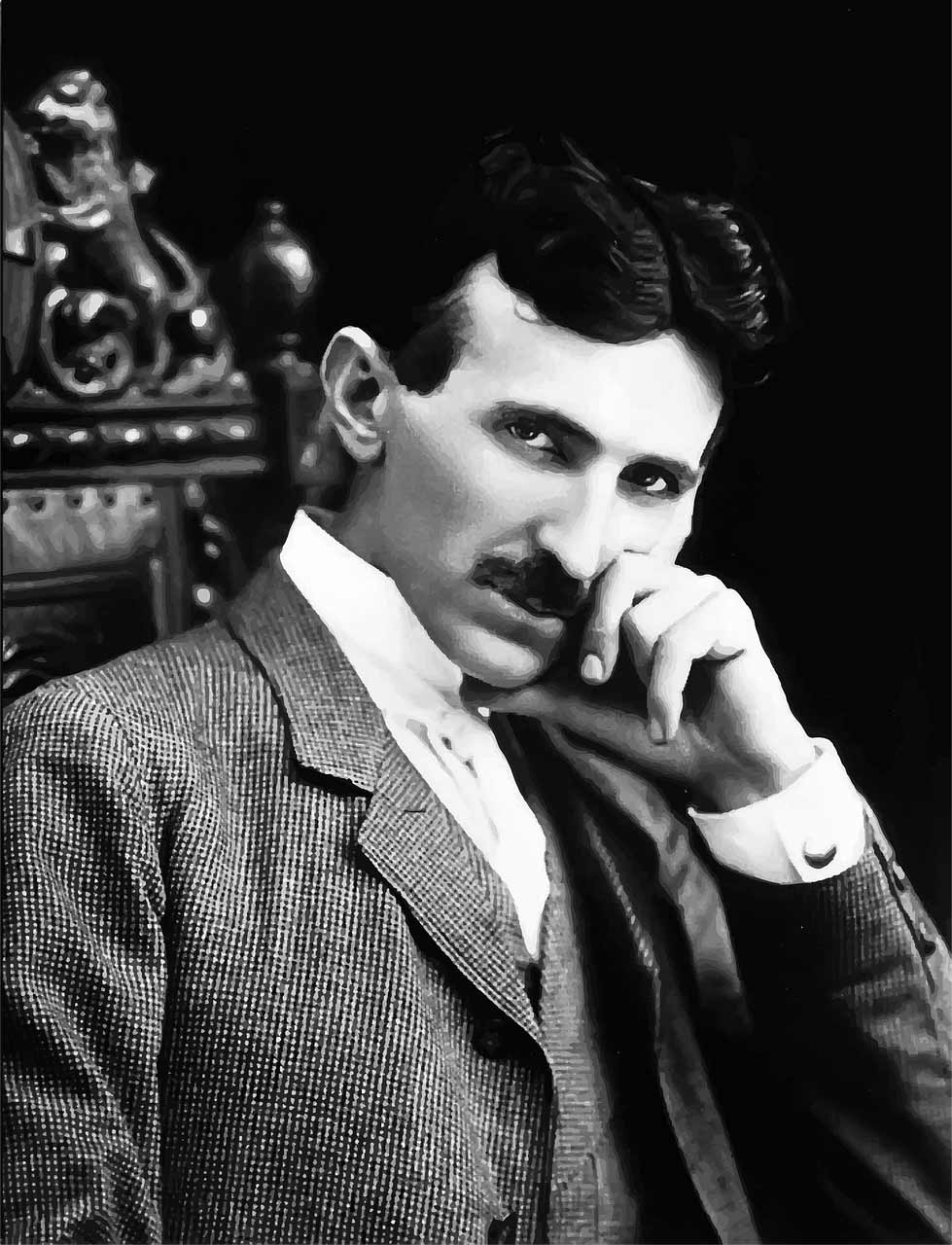
The death of Tesla's mother and the trip to Europe
Nikola Tesla returned to Europe in 1892, to give a sensational lecture on the 3rd of February in London on the topic "Experiments with alternating currents of high potential and high frequency". He gave the same lecture in Paris only 2 weeks later.
In Paris, unfortunately, he received a telegram with the news that his mother was dying. He hurriedly finished his visit to Paris to stay with his mother. He arrived on April 15, just a few hours before his mother's death. After the death of his mother, Nikola Tesla fell ill and spent 3 weeks in Gospić recovering.
At the invitation of George Stanojevic, Tesla came to Belgrade where he met with Aleksandar Obrenovic and received the decoration of the Order of Saint Sava.
The most successful years of Tesla's work
In the period from 1893 to 1895, Nikola Tesla researched high-frequency alternating current. Using "Tesla's Coil", it manages to produce a voltage of one million volts. He researched the surface effects of high frequencies in materials that are conductors, he also dealt with the synchronization of electrical circuits, he developed a lamp with a dilute gas that glows without wires. In those years, he worked on the development of wireless transmission of electricity and the first transmission of radio waves.
In 1893, in front of 6,000 spectators in St. Louis, Tesla attractively presented many experiments, including a transmission similar to radio communication. While lecturing at the Franklin Institute in Philadelphia and the National Electric Lighting Association, he demonstrated his principles in detail. Tesla's demonstrations of his patents soon became very popular and were closely followed.
A big blow to Tesla's research was the fire that broke out in his laboratory. During a fire on March 13, 1895, on Fifth Avenue in New York, about 400 electric motors, research records, electric and mechanical oscillators, as well as power transformers and numerous original constructions of Tesla's discoveries were burned.
As a man of exceptional creativity and perseverance, he quickly overcame the crisis and opened a new company "Nikola Tesla" only two days after the fire, where he continues his creative work.
In the years to come, Nikola Tesla will become an opponent of Thomas Edison. Tesla's patent enabled extremely efficient distribution of electricity. The conflict between Tesla and Edison was popularly called the "War of the Currents". As a result of the electricity war, Thomas Edison and Westinghouse almost went bankrupt. Nikola Tesla tore the contract and released Westinghouse from the obligation to pay a fee for the use of the patent.
Wireless transmission and invention of the radio
When he was 41, Nikola Tesla filed his first patent related to radio waves (patent number 645576). Only a year later, he presented the project of radio control of the ship to the US Navy, believing that his invention could be useful for making torpedoes with radio navigation. The radio-controlled ship was presented to the public in 1898 at an exhibition in Madison Square Garden in New York. For his inventions of remote control, Nikola Tesla called "the art of telematics" as a type of robotics. The following year in Chicago, Nikola Tesla presented a model of a ship that can dive.
In the same year, Nikola Tesla patented several inventions that have a significant impact on the world as we know it today. The inventions he patented were an electric lighter and a spark plug for gasoline internal combustion engines (patent number 609250).
Nikola Tesla and urban legends
In the introduction to the story of Nikola Tesla, I mentioned that he was a timeless man, whose discoveries were often beyond the reach of many. Tesla's experiments were so advanced and timeless that Tesla himself soon became the subject of urban legends. In 1898, he moved to Colorado Springs, where he conducted several hitherto unimaginable kinds of research.
In his laboratory, Nikola Tesla proved that the Earth is a conductor. Performing electric discharges of several million volts, he produced artificial lightning that was tens of meters long. The subject of his research was also atmospheric electricity when he observed through the discharges on his receiver.
Tesla's study of extraterrestrial life raised a lot of dust. Tesla himself claimed that he captured extraterrestrial frequencies with his radio receiver, which were repeated according to the established pattern. These conclusions did not meet with the approval of the scientific community. Despite that, Tesla continued his research and directed his efforts towards sending signals to Mars.
On January 7, 1900, Tesla left Colorado Springs, and his laboratory was disbanded and sold to pay off debts. The stay in Colorado Springs was an overture for Tesla's next big project.
Construction of a world radio station on Long Island
Nikola Tesla's next ambitious project was the construction of a world radio station on Long Island. The project cost $ 150,000 and a half was funded by JP Morgan. Construction began in 1901, but only a year later they heard the news that Marconi had managed to send overseas radio waves. The American Patent Office annulled the previous decision to grant Tesla a patent and later granted it to Marconi, who in 1909 also received the Nobel Prize for the discovery of radio waves. Tesla was extremely affected by this and sued Marconia, seeking damages for violating Tesla's rights to the radio. There was no court epilogue because the trial costs were too expensive for Tesla. He almost went bankrupt in 1915, and his life slipped more and more towards poverty.
Faced with the current failure, Nikola Tesla did not lose his spirit. On his fiftieth birthday, he presented a new invention - bladeless turbines with a power of 150 kW (200 horsepower) with 16,000 rpm. In 1910, turbines with 100 to 5,000 horsepower were tested at Waterside Power Plants in New York.
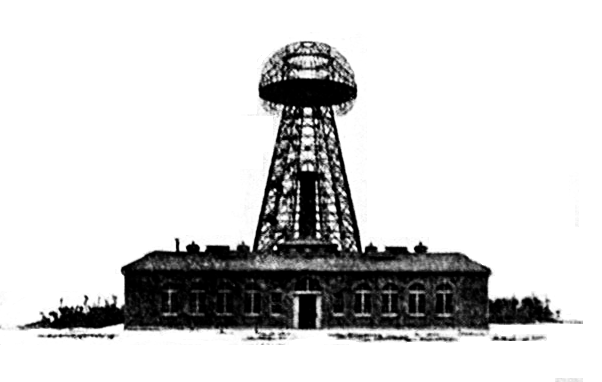
source: wikipedia
The period between the two Great wars
Before the beginning of WW1, Tesla gathered overseas investors, asking for funding for his further research. After the First World War, Tesla was left without a contribution from his patents from Europe, when he presented his vision of the post-war environment in an article published in 1914.
Although he was left without financial help, recognitions still arrived, so in 1917 he received the Edison Medal for outstanding contributions by finding a polyphase system of alternating currents. Anthological words about Tesla were said during the award ceremony. Describing its immeasurable significance for humanity, it was said that if Tesla's patents stopped working it would mean the cessation of industry, trains would stop, the world would remain in darkness, and all factories would become dead. Imagine the irony that in the moments when he ran out of funds from his patents and when investors stopped providing funds, the moment he was on the brink of begging, he received an award named after Thomas Edison (the man who cheated him for the then huge $ 50,000).
Controversies and the last moments of Nikola Tesla's life
Nikola Tesla, in addition to his undeniable genius, also showed symptoms of obsession, which were often very bizarre. His phobia and obsession with microbes were widely known. Nikola Tesla was also obsessed with number three, so when he went to a restaurant he asked to be served three napkins with each meal. When he would come home, he would make three circles around it before entering the building.
Tesla's obsessions and their symptoms were insufficiently researched during that time, so they were attributed to the beginning of madness. This led to the fact that Tesla's shaky reputation almost completely collapsed.
He spent the last years of his life alone, living in the New York hotel "Pennsylvania" in room 3327 on the 33rd floor. He was very careful about his diet
On his 75th birthday, Time magazine puts him on the front page and writes in the text about his merits for humanity with his discoveries related to electricity.
There was an initiative to form a special fund of investors to provide Tesla with funds for a carefree life until the very end. Mihajlo Pupin wholeheartedly supported the initiative. However, Tesla refused that kind of help and lived on the symbolic fee of the Yugoslav government for the rest of his life. At the age of 81, he announced a field theory that was never published.
Nikola Tesla died of a heart attack at the age of 87 on January 7, 1943. In the same year, the US Supreme Court posthumously returned his radio patent. He was cremated on January 12, 1943, after serving in St. John the Theologian Church in Manhattan. More than 2,000 people attended the funeral. Urma with his remains is in the Nikola Tesla Museum in Belgrade.
Nikola Tesla is left with over 700 patents, and his name is becoming synonymous with an innovative spirit.
We will not be mistaken if we say that Tesla invented the 20th century!










